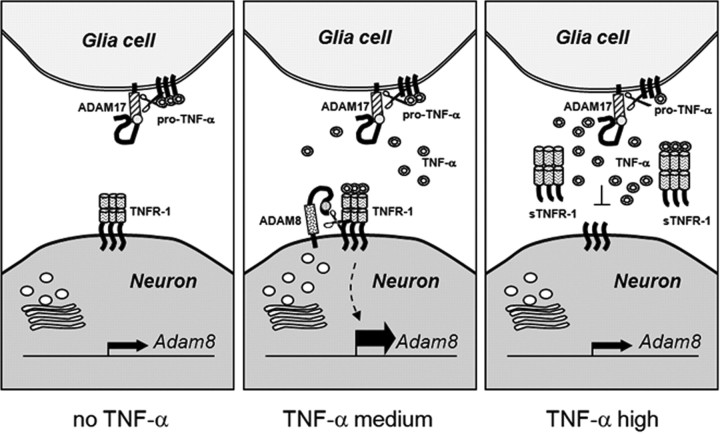Figure 8.
Proposed neuroprotective feedback loop involving TNF-α, TNF-R1, and ADAM8. At low TNF-α concentrations, the transcription rate of the Adam8 gene is low and very low levels of soluble TNF-R1 are found in the extracellular compartment. At high TNF-α concentrations (e.g., 100 U/ml), TNF-R1 activates intracellular pathway(s) strongly stimulating transcription of the Adam8 gene. Its product, the cell-surface-exposed protease ADAM8 cleaves the transmembrane protein TNF-R1 and releases sTNF-R1 from the cell into the intercellular space, in which high concentrations of sTNF-R1 are able to scavenge free TNF-α. This in turn reduces the cellular response to TNF-α, i.e., preventing activation of TNF-dependent genes involved in neuronal cell death.

